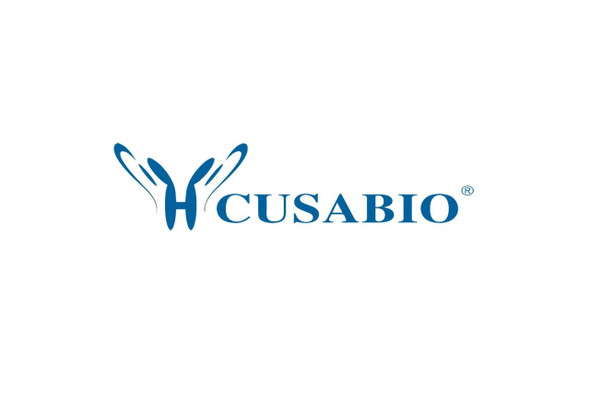Cusabio Mycobacterium tuberculosis Recombinants
Recombinant Mycobacterium tuberculosis Enoyl-[acyl-carrier-protein] reductase [NADH] (inhA) | CSB-EP363781MVZa0
- SKU:
- CSB-EP363781MVZa0
- Availability:
- 3 - 7 Working Days
Description
Recombinant Mycobacterium tuberculosis Enoyl-[acyl-carrier-protein] reductase [NADH] (inhA) | CSB-EP363781MVZa0 | Cusabio
Alternative Name(s): ENR (Enoyl-ACP reductase) (FAS-II enoyl-ACP reductase) (NADH-dependent 2-trans-enoyl-ACP reductase)
Gene Names: inhA
Research Areas: Cancer
Organism: Mycobacterium tuberculosis
AA Sequence: MTGLLDGKRILVSGIITDSSIAFHIARVAQEQGAQLVLTGFDRLRLIQRITDRLPAKAPLLELDVQNEEHLASLAGRVTEAIGAGNKLDGVVHSIGFMPQTGMGINPFFDAPYADVSKGIHISAYSYASMAKALLPIMNPGGSIVGMDFDPSRAMPAYNWMTVAKSALESVNRFVAREAGKYGVRSNLVAAGPIRTLAMSAIVGGALGEEAGAQIQLLEEGWDQRAPIGWNMKDATPVAKTVCALLSDWLPATTGDIIYADGGAHTQLL
Source: E.coli
Tag Info: N-terminal 6xHis-tagged
Expression Region: 1-269aa
Sequence Info: Full Length
MW: 32.6 kDa
Purity: Greater than 90% as determined by SDS-PAGE.
Relevance: Enoyl-ACP reductase of the type II fatty acid syntase system, which is involved in the biosynthesis of mycolic acids, a major component of mycobacterial cell walls. Catalyzes the NADH-dependent reduction of the double bond of 2-trans-enoyl-[acyl-carrier protein], an essential step in the fatty acid elongation cycle of the FAS-II pathway. Shows preference for long-chain fatty acyl thioester substrates, and can also use 2-trans-enoyl-CoAs as alternative substrates. The mycobacterial FAS-II system utilizes the products of the FAS-I system as primers to extend fatty acyl chain lengths up to C56, forming the meromycolate chain that serves as the precursor for final mycolic acids.
Reference: "Overexpression of inhA, but not kasA, confers resistance to isoniazid and ethionamide in Mycobacterium smegmatis, M. bovis BCG and M. tuberculosis." Larsen M.H., Vilcheze C., Kremer L., Besra G.S., Parsons L., Salfinger M., Heifets L., Hazbon M.H., Alland D., Sacchettini J.C., Jacobs W.R. Jr. Mol. Microbiol. 46:453-466(2002)
Storage: The shelf life is related to many factors, storage state, buffer ingredients, storage temperature and the stability of the protein itself. Generally, the shelf life of liquid form is 6 months at -20?/-80?. The shelf life of lyophilized form is 12 months at -20?/-80?.
Notes: Repeated freezing and thawing is not recommended. Store working aliquots at 4? for up to one week.
Function:
Involvement in disease:
Subcellular Location:
Protein Families:
Tissue Specificity:
Paythway:
Form: Liquid or Lyophilized powder
Buffer: If the delivery form is liquid, the default storage buffer is Tris/PBS-based buffer, 5%-50% glycerol. If the delivery form is lyophilized powder, the buffer before lyophilization is Tris/PBS-based buffer, 6% Trehalose, pH 8.0.
Reconstitution: We recommend that this vial be briefly centrifuged prior to opening to bring the contents to the bottom. Please reconstitute protein in deionized sterile water to a concentration of 0.1-1.0 mg/mL.We recommend to add 5-50% of glycerol (final concentration) and aliquot for long-term storage at -20?/-80?. Our default final concentration of glycerol is 50%. Customers could use it as reference.
Uniprot ID: P9WGR0
HGNC Database Link: N/A
UniGene Database Link: N/A
KEGG Database Link: N/A
STRING Database Link: N/A
OMIM Database Link: N/A

![Recombinant Mycobacterium tuberculosis Enoyl-[acyl-carrier-protein] reductase [NADH] (inhA) Recombinant Mycobacterium tuberculosis Enoyl-[acyl-carrier-protein] reductase [NADH] (inhA)](https://cdn11.bigcommerce.com/s-rvypo0hmzw/images/stencil/608x608/products/4570/8535/cusabio__81676.1638370075__97790.1638525463.jpg?c=1)
![Recombinant Mycobacterium tuberculosis Enoyl-[acyl-carrier-protein] reductase [NADH] (inhA) Recombinant Mycobacterium tuberculosis Enoyl-[acyl-carrier-protein] reductase [NADH] (inhA)](https://cdn11.bigcommerce.com/s-rvypo0hmzw/images/stencil/590x590/products/4569/8533/cusabio__81676.1638370075__16384.1638525462.jpg?c=1)
![Recombinant Mycobacterium tuberculosis Enoyl-[acyl-carrier-protein] reductase [NADH] (inhA) Recombinant Mycobacterium tuberculosis Enoyl-[acyl-carrier-protein] reductase [NADH] (inhA)](https://cdn11.bigcommerce.com/s-rvypo0hmzw/images/stencil/590x590/products/8048/15114/cusabio__81676.1638370075__06961.1638527407.jpg?c=1)
![Recombinant Staphylococcus aureus Enoyl-[acyl-carrier-protein] reductase [NADPH] FabI (fabI) Recombinant Staphylococcus aureus Enoyl-[acyl-carrier-protein] reductase [NADPH] FabI (fabI)](https://cdn11.bigcommerce.com/s-rvypo0hmzw/images/stencil/590x590/products/5373/10028/cusabio__81676.1638370075__28629.1638525915.jpg?c=1)

